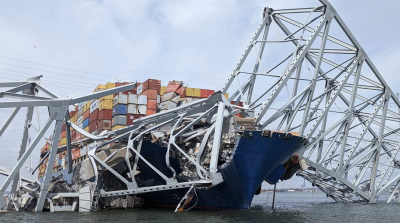Red and White Fleet is going green. Last summer, Sandia National Laboratories signed a cooperative research and development agreement with the San Francisco-based ferry operator to design, build and operate a high-speed hydrogen fuel cell passenger ferry and hydrogen refueling station.
Named SF-Breeze (San Francisco Bay Renewable Energy Electric vessel with Zero Emissions), the ferry’s hydrogen fuel cells will have several advantages over diesel engines that power most U.S. passenger ferries — zero emissions, higher energy efficiency, quiet operation and no risk of fuel spills. The Maritime Administration (Marad) is funding a feasibility study to examine the technical, regulatory and economic aspects of the project.
The theory goes that replacing diesel engines and generators with hydrogen fuel cells could lead to improvements in air and water quality in harbors. The planned refueling station would reportedly be the largest in the world and serve fuel cell electric cars, buses and fleet vehicles in addition to the Red and White ferry and other vessels. The zero-emission high-speed cat ferry will operate on a 23-nautical-mile route with two daily roundtrips. The SF-Breeze’s liquid hydrogen fuel cells will generate electricity to power the waterjet propulsion. The desired speed is 35 knots.
Sandia is leading the study in partnership with the ferry operator, the American Bureau of Shipping, the U.S. Coast Guard and Seattle-based Elliott Bay Design Group.
“LNG is a temporary use. Fuel that ships use in the future is not going to be LNG. Ferries with fuel cells is next, and the thing we’re shooting for is zero pollution … hydrogen for renewable energy,” Thomas Escher, owner of Red and White, said during a conference session on the project at the Passenger Vessel Association’s annual meeting Sunday in Washington, D.C. “The question is, is it economically feasible?”
Economic viability is essential to the success of the ferry.
“From the beginning we said it has got to work as a ferry,” said John Waterhouse of EBDG. “This is not just a technology demonstrator. It’s got to work as a boat going back and forth. So as the designers, we very much took that to heart and said this is what has to make sense.”
The hope, according to Dr. Joseph Pratt of Sandia National Labs, “is that the feasibility study, regardless of the outcome, can be useful to others nationally and around the world who are looking at hydrogen fuel cell vessels as clean energy alternatives.”
A preliminary conceptual study shows that the answer is probably yes, but it will require a boat specially designed to accommodate hydrogen fuel and fuel cell technology.





